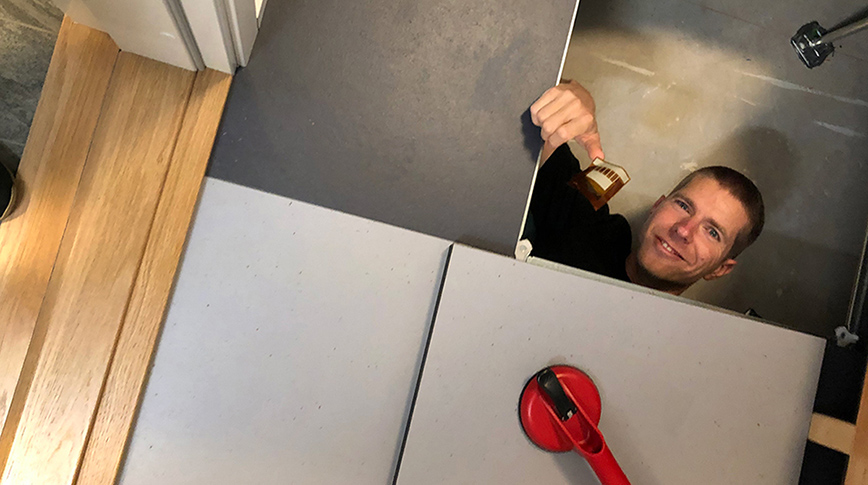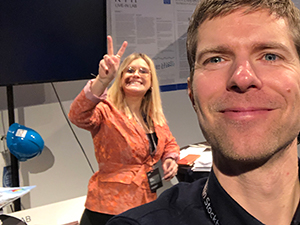A data pool full of research goodies

KTH Live-In Lab builds up a database with measurement data and research results from its operations. "Data pool" will also form the basis for a larger research database at KTH - KTH BigDataBase. The Center manager Jonas Anund Vogel hopes that more teachers, researchers, and students will start collaborations with the knowledge center.
On KTH's campus, the competence center ”Live-In Lab” has a number of buildings where researchers and companies can test new products, services and methods in real buildings. Most things that can be measured, are indeed measured here, such as CO2, temperature, light, humidity, pressure, air flows and water and electricity consumption during different hours and conditions. Simply put: a lab that you live and work in, just as the name suggests.
All measurements generate a large amount of information that should be attractive for researchers from many a field. By collecting data from the testbeds, and now also the research results from projects carried out in Live-In Lab, a growing data pool emerges that hopefully not only will attract more researchers to the buffet of information, but also teachers, students, and industry partners. Those who want to get hold of the data fill in an application on Live-In Lab's website.
Make results available

”There’s not much of this type of building data that is as finely sorted as ours. And by making the researchers' results available through us, they can be of even greater benefit”, says Jonas Anund Vogel, who is in charge of the center.
”For example, someone else can continue where a researcher left off, and it will be easier to find synergies and new research areas”.
The idea of making all information available is to benefit development and innovation and make progress faster. The projects at Live-In Lab also give Jonas and his co-workers something in return:
”Researchers can refine the data and what we get back is knowledge that can be added into different contexts. We build the metadata around the data”.
But there is a master plan behind Live-In Labs data pool. Funded by KTH's Digitization Platform and in cooperation with KTH's IT department they are investigating the possibility of building a “Big database”, which will hopefully be tested as a demo this autumn.
KTH BigDataBase
”Our data pool will in the long run be reached via the more comprehensive KTH BigDataBase. The idea is that everyone at KTH should be able to log in and via BigDataBase retrieve all data from a number of different places throughout KTH. Like a research database.”
However, using data from residents in Live-In Labs housing project is associated with a certain amount of bureaucracy, since it’s a matter of safeguarding integrity. Jonas says that everyone who collects data from the residents must get a consent from each one of them, in some cases an ethics review permit is required, especially when it comes to handling biodata.

“We’re developing our data pool to share data according to the GDPR and other laws and regulations. The idea is to be able to for example train algorithms on sensitive data with us, in order to become a national resource with certain deviations from the GDPR”.
Companies are also welcome to use the information Live-In Lab has, but first they must team up with a researcher. The reason is for the knowledge to stay at campus.
”We want to make our data and knowledge as public as possible, but still want to promote KTH's research and education. The courses at KTH should not have to work with yesterday’s news”.
Text: Anna Gullers

